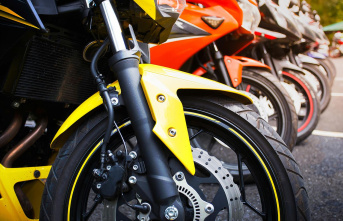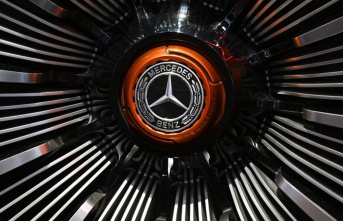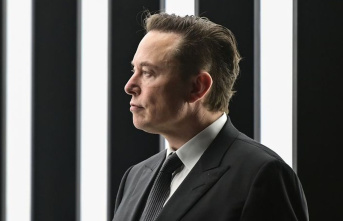This article first appeared on ntv.de.
Whether on Instagram, Tiktok or Twitter, anger has been erupting on social media for weeks about the same topic: a controversial oil production project in the north of the state of Alaska. Last week, the US government gave energy giant Conoco Phillips the long-awaited approval. The US company is allowed to drill for oil at three locations in the federally owned National Petroleum Reserve. The so-called Generation Z, young people who were born around the turn of the millennium, protested the most violently. ntv.de explains what the multi-billion project is all about, why it got the green light from Washington in the first place and what is special about this protest movement of young climate activists on the Internet.
The Willow Project is a newly approved oil drilling project by the Texan energy company Conoco Phillips in northern Alaska. Conoco has been drilling on federal land in the National Petroleum Reserve for five years. It's the bread and butter business of the third-largest US oil company, so in itself it's nothing special. However, it is an older project that has surprisingly been revived. Conoco had proposed it in 2020. The Trump administration initially approved it, but it was then stopped under US President Joe Biden due to environmental concerns. On March 13, despite his previous climate promises and ongoing protests, he finally waved the controversial project through.
Conoco Phillips plans to invest a total of eight to ten billion US dollars in the Willow Project. The planned production volume is given as 180,000 barrels of oil per day and the lifetime of the project as 30 years. In total, this results in around 600 million barrels of oil that are to be extracted, that is more than 95 billion liters of oil. Converted, that means almost 300 million tons of CO₂ that are emitted when the oil is burned.
However, it remains to be seen whether the delivery volume will remain the same. Other calculations seem to be circulating internally. According to the Washington Post, Conoco has already spoken to investors of a total of up to 3 billion barrels that could be developed via the new infrastructure. That's a gigantic amount. For comparison: in 2021 the US produced a total of around 711 million barrels of crude oil.
The anger is directed primarily against US President Biden. He is accused of breaching his word, having vowed during the election campaign not to allow any further oil and gas drilling on state soil. Instead of protecting the environment, as promised, he is now accelerating the climate catastrophe, they say. Biden's pledge to make the U.S. carbon neutral by 2050 is becoming a distant prospect with more and more areas being opened up for new oil drilling. In addition to the large amounts of CO₂ that are released, the side effects of the project are also criticized. Numerous untouched areas of the arctic tundra would be destroyed by the necessary infrastructure for workers and the extraction and transport of crude oil, the criticism goes. Wild animals would also be driven out of their habitats as a result.
Absolutely. According to a recent environmental assessment by the Biden administration, the project will generate about 9.2 million tons of carbon dioxide annually, equivalent to driving nearly 2 million ICE cars.
Conoco Phillips is said to have factored in climate change in the planning. The company firmly anticipates that the permafrost on which the drilling infrastructure will be built will soften over the next 30 years due to the climate crisis. Conoco wants to prevent this by artificially cooling the floor, which will, however, result in further CO₂ emissions.
There are several explanations for this: First of all, the billion-euro project is intended to help make the United States independent of foreign oil imports. Fiscal policy interests also play a role: the state and the region in Alaska expect billions in revenue from taxes and license fees. However, there is a drop of bitterness here: it will be years before the income starts to bubble up. Also in the future are the thousands of jobs that Alaska is hoping for. Legal reasons are said to have contributed to the change of heart. Allegedly, Conoco Phillips has valid leases in the area. The government should therefore have expected fines and legal consequences.
The bottom line is that the Willow Project is sold as a compromise: Biden reduced the original permit for the construction of five rigs to three (which makes no difference from a climate point of view, since the three rigs will also produce 90 percent of the oil reserves targeted by Conoco Phillips). Also, just a day before the decision to use Willow, the US government restricted oil and gas drilling in the Arctic Ocean. Another concession is that protection of the federally owned National Petroleum Reserve, where Willow is located, will be expanded by millions of acres.
The picture is mixed. There are tribal people who say that drilling is causing significant damage to their cities, their way of life and the local environment. But there are also the representatives who support the drilling because they promise jobs and economic recovery. The mayor of the affected district, Harry Brower, is one of the supporters of the project. "We have better schools, hospitals, emergency services, roads and a much higher life expectancy," he is quoted as saying by t-online.
The protest against the Willow Project has spread like wildfire on social media. Elise Joshi, a 20-year-old climate activist who has been posting environmental content for two years, said she's seen so much interest in a climate issue "in a long, maybe never." hashtags like
Yes. There is also concern that the movement will fuel climate panic and hysteria. For example, the scientist Alaina Wood, who also publishes videos on Tiktok, warned in the Washington Post that misinformation published about the Willow Project is not effective because it would increase fears of climate change. She herself shares videos to reassure others who think the project will make climate change irreversible, "which is not true."
Despite the approval granted, opposition to the project remains high. A change.org petition calling for an end to the project has already garnered more than 4.5 million signatures, and a letter-writing form uploaded by advocacy group Protect the Arctic has received over 1, 1 million unique letters to the White House tracked. exit open. Lawsuits are expected. An end for the project at this point in time is probably no longer likely. But if that were to happen, it would mark a turning point.







